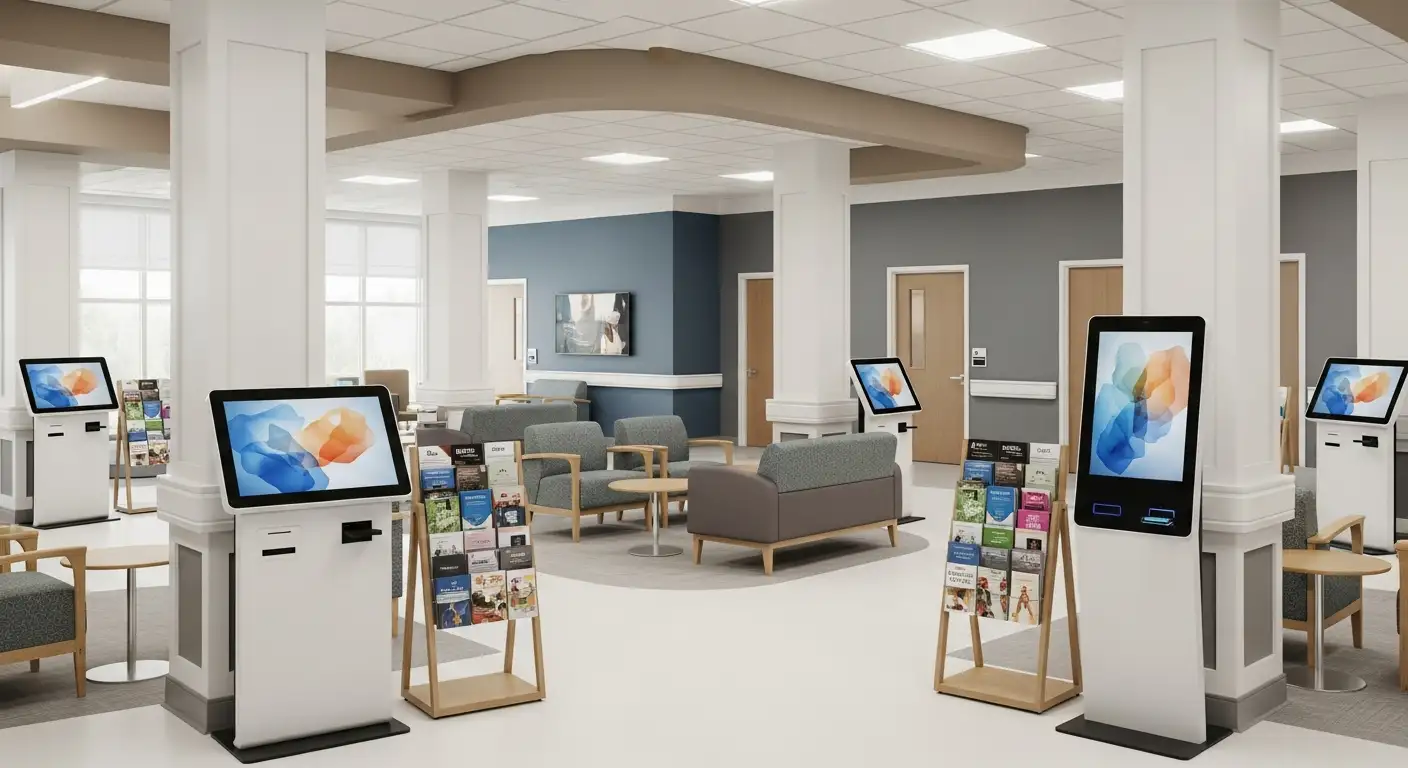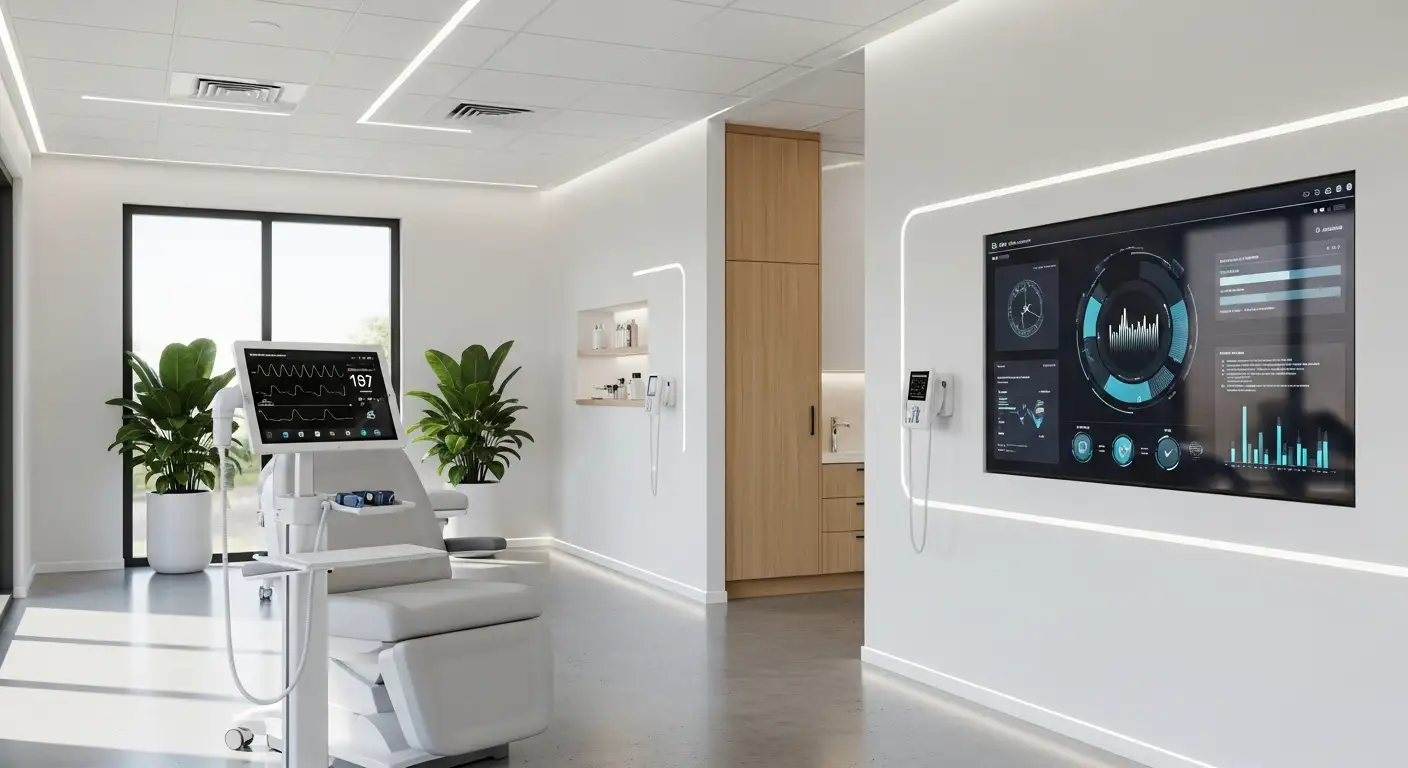Combining Telehealth + AI in Preventive Medicine

Transforming Prevention through Technology
The integration of telehealth and artificial intelligence (AI) is reshaping the landscape of preventive medicine. These technologies collectively enable early intervention, personalized care, and improved health outcomes, particularly in rural and underserved communities. This article explores how digital health innovations are advancing preventive strategies, the latest technological developments, and the challenges faced in implementing these solutions at scale. As healthcare continues to shift from reactive to proactive care, understanding the synergy of telehealth and AI becomes essential for clinicians, policymakers, and patients alike.
The Foundations of Digital Preventive Medicine
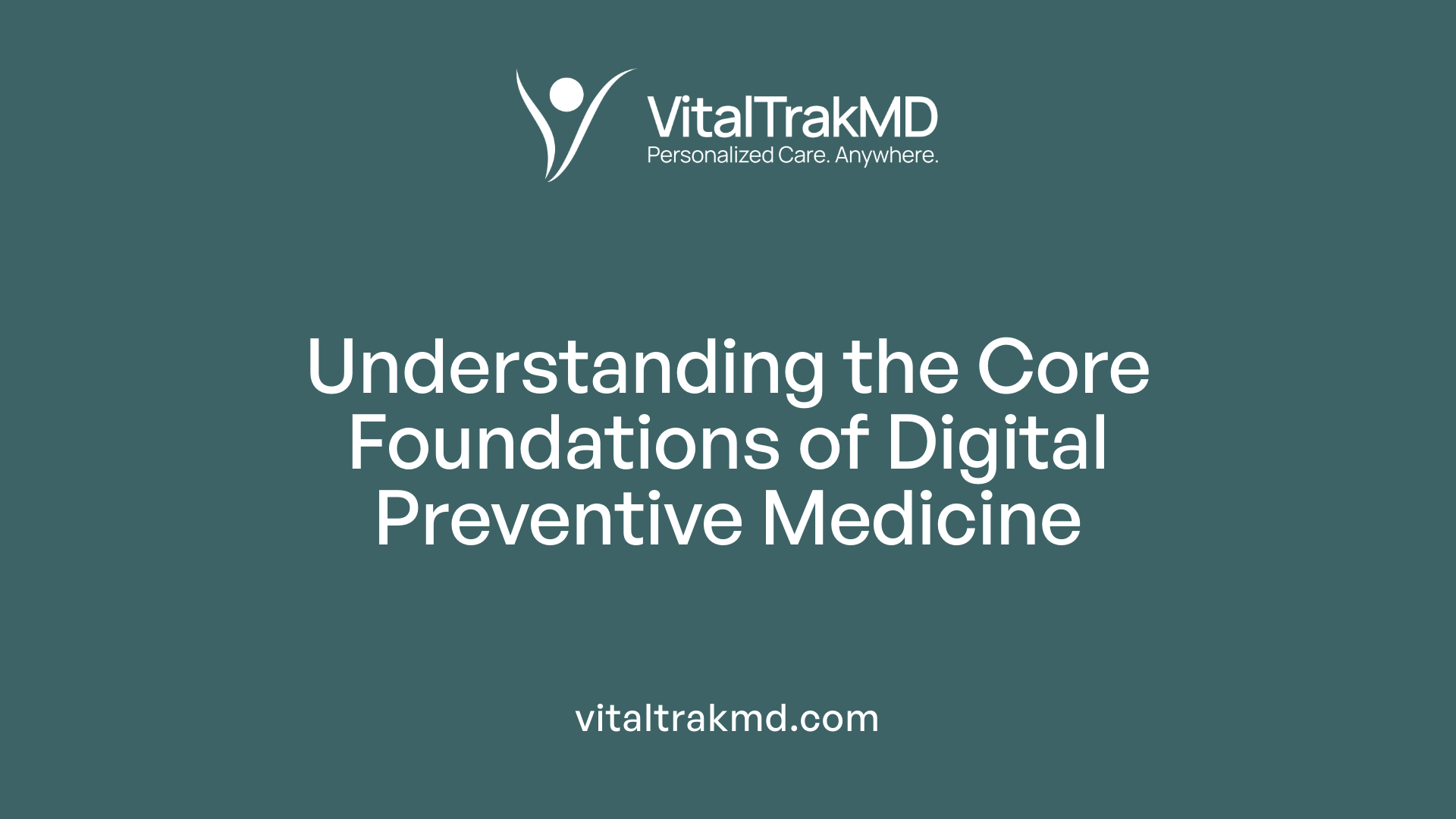 Preventive medicine aims to reduce the risk of disease and promote overall health through proactive strategies. It encompasses primary prevention—preventing disease before it starts, secondary prevention—early detection and intervention, and tertiary prevention—reducing the impact of ongoing illness.
Preventive medicine aims to reduce the risk of disease and promote overall health through proactive strategies. It encompasses primary prevention—preventing disease before it starts, secondary prevention—early detection and intervention, and tertiary prevention—reducing the impact of ongoing illness.
In recent years, telehealth and artificial intelligence (AI) have revolutionized how preventive medicine is practiced. These digital tools facilitate early detection by enabling continuous health monitoring and data analysis, which are vital for identifying health risks at various stages.
Telehealth expands access to healthcare services, especially in rural and underserved communities. Virtual consultations allow patients to seek medical advice without traveling long distances, while remote monitoring devices collect real-time health data. AI algorithms analyze this data efficiently, offering predictive insights that can alert healthcare providers to potential health issues before symptoms escalate.
Integrating AI and telehealth supports all levels of prevention:
| Prevention Level | Role of Technology | Examples |
|---|---|---|
| Primary | Prevent disease onset through lifestyle data, risk assessment | Mobile health apps promoting healthy habits, wearable activity monitors |
| Secondary | Detect early signs of disease, screen for risks | AI-powered image analysis for early cancer detection, remote screening tools |
| Tertiary | Manage and monitor ongoing health conditions | Continuous glucose monitoring for diabetics, remote blood pressure tracking |
Telehealth platforms, supported by AI, strengthen patient engagement and compliance. AI-driven decision support systems guide personalized interventions, while virtual assistants help patients manage their health proactively.
The integration of these technologies transforms preventive medicine from reactive to proactive care. Still, challenges such as data privacy, digital literacy, and technology accessibility must be addressed to ensure equitable benefits for all populations.
Ongoing research continues to optimize these systems, aiming to develop accessible, secure, and validated digital health interventions for widespread use. As AI advances and connectivity improves, the potential for preventive medicine to extend and enhance quality of life becomes increasingly promising.
Advances Powering Preventive Care—Recent Technological Innovations
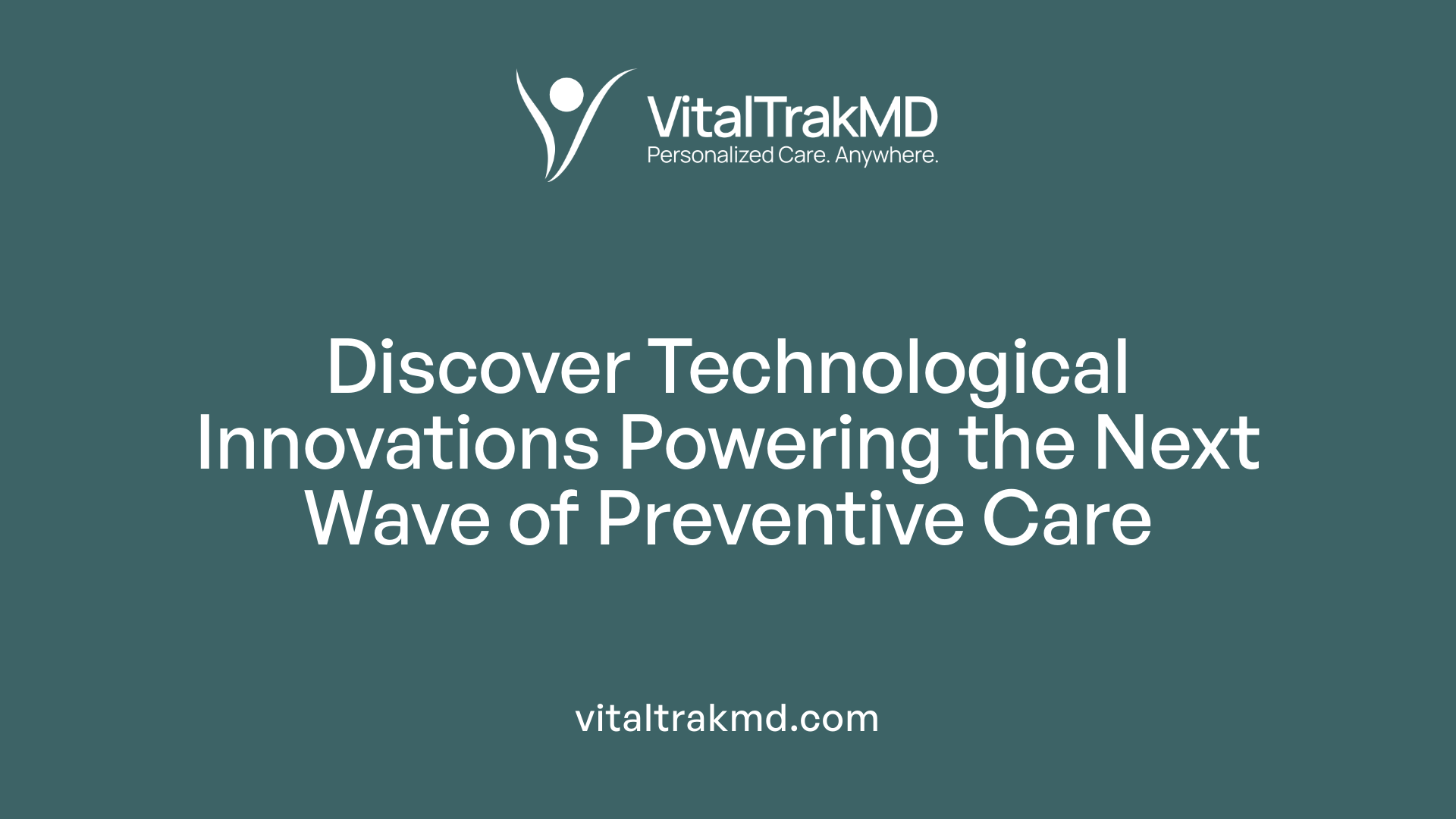 Recent advancements in telehealth and AI have profoundly transformed preventive medicine, making healthcare more proactive and personalized. AI-powered predictive analytics now analyze vast datasets, including electronic health records, genetic information, and lifestyle factors, to identify individual health risks early. This enables clinicians to develop targeted interventions before the onset of symptoms, improving health outcomes.
Recent advancements in telehealth and AI have profoundly transformed preventive medicine, making healthcare more proactive and personalized. AI-powered predictive analytics now analyze vast datasets, including electronic health records, genetic information, and lifestyle factors, to identify individual health risks early. This enables clinicians to develop targeted interventions before the onset of symptoms, improving health outcomes.
Wearable health devices and the Internet of Things (IoT) play a critical role in continuous remote monitoring. Devices such as smartwatches, biosensors, and blood pressure monitors collect real-time vital signs—like heart rate, blood oxygen levels, and activity data—that AI systems analyze to detect anomalies swiftly. This constant stream of information supports early detection of chronic conditions such as diabetes or cardiovascular issues, reducing hospital visits and enabling timely treatment.
Teleconsultation platforms enhanced with AI further elevate preventive efforts. These systems incorporate natural language processing and virtual reality tools to facilitate more natural and efficient patient-provider interactions. AI also aids remote procedures, such as virtual diagnostics or guided therapies, expanding access to specialists regardless of geographic barriers. Moreover, AI-driven image analysis assists healthcare providers in interpreting medical scans and lab results more accurately, ensuring swift and precise diagnosis.
The integration of emerging technologies like 5G, blockchain, and the Internet of Medical Things (IoMT) further accelerates the development of connected healthcare. High-speed networks enable seamless data transmission, while blockchain ensures the security and integrity of sensitive health information. These technological synergies support a new era of preventive care, characterized by accessible, secure, and personalized health management services, ultimately leading to healthier populations and reduced healthcare costs.
The Role of Digital Health Frameworks and Models
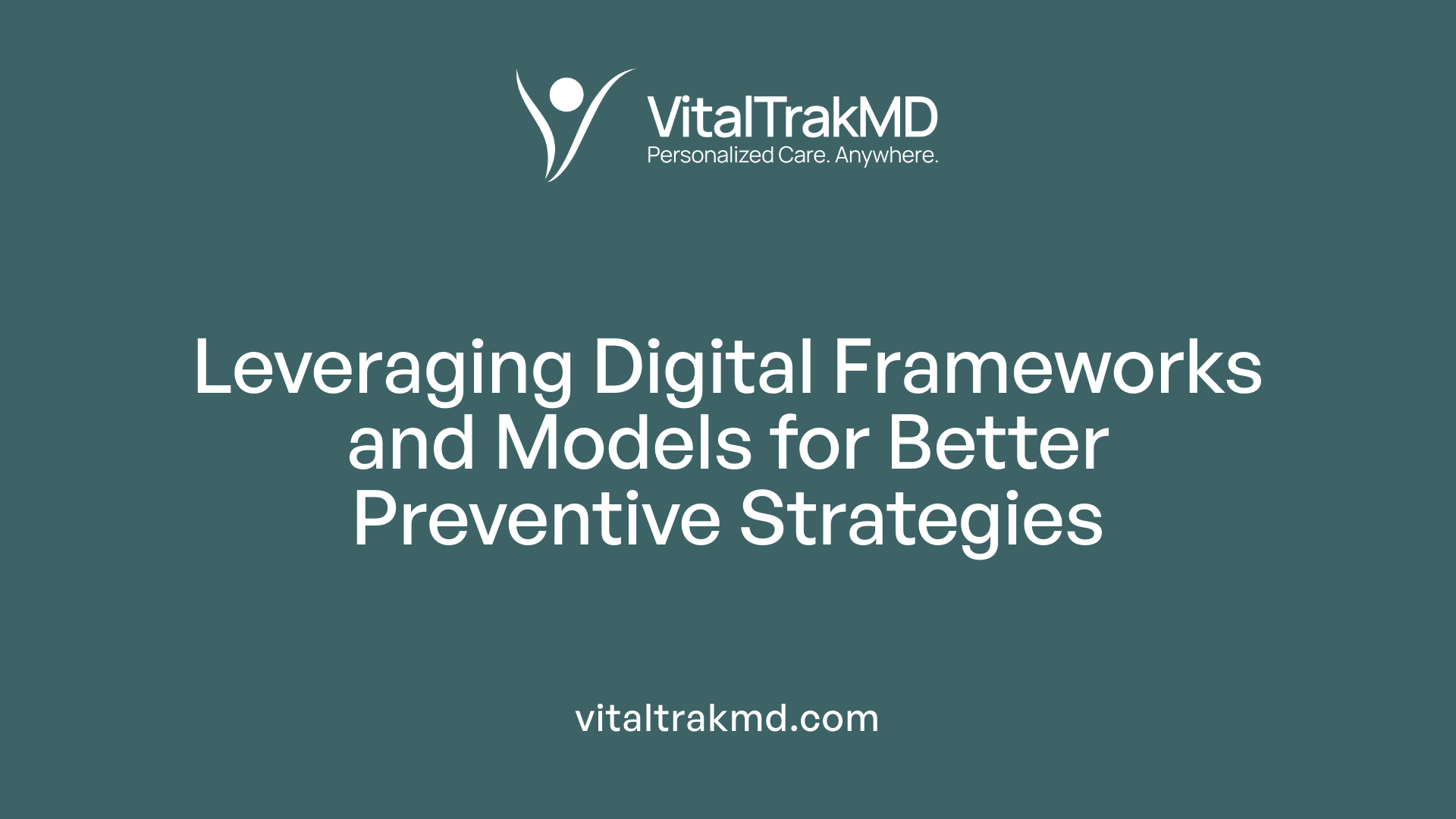 Digital health platforms and innovative frameworks are transforming preventive medicine by seamlessly integrating AI, telemedicine, and data-sharing technologies. They enable early disease detection, personalized interventions, and continuous health monitoring, essential for managing health across all levels of prevention. For example, genomics and genetic profiling help tailor risk assessments, allowing clinicians to identify high-risk individuals and develop targeted prevention strategies.
Digital health platforms and innovative frameworks are transforming preventive medicine by seamlessly integrating AI, telemedicine, and data-sharing technologies. They enable early disease detection, personalized interventions, and continuous health monitoring, essential for managing health across all levels of prevention. For example, genomics and genetic profiling help tailor risk assessments, allowing clinicians to identify high-risk individuals and develop targeted prevention strategies.
Remote patient monitoring, using wearables and IoT devices, facilitates constant data collection on vital signs, activity levels, and even biochemical markers. This real-time information empowers healthcare providers to detect subtle health changes early, making timely adjustments to treatment plans and reducing the risk of complications.
Public health applications of AI and telehealth include analyzing large datasets from various sources—such as social media, electronic health records, and environmental sensors—to predict disease outbreaks and guide resource allocation. During the COVID-19 pandemic, these technologies proved invaluable in expanding testing, contact tracing, and delivering remote care, especially in underserved communities.
Case studies on diseases like breast cancer and diabetes illustrate how digital health frameworks leverage AI-assisted diagnostics, app-based interventions, and remote monitoring to improve early detection and management. These systems support primary care objectives like comprehensiveness and care coordination, enabling services to reach wider populations and improving adherence to preventive measures.
The rapid adoption of digital health during the pandemic has demonstrated its potential to make healthcare more accessible, affordable, and patient-centered. Challenges such as ensuring data privacy, addressing digital literacy gaps, and reducing disparities must be addressed to ensure equitable healthcare delivery.
In conclusion, digital health frameworks form the backbone of a proactive, precision-based approach to prevent disease progression. By leveraging AI, telehealth, and continuous data collection, they enhance diagnosis, facilitate tailored treatments, and promote overall population health, especially in underserved and rural communities.
Current Challenges in Telehealth and AI Integration
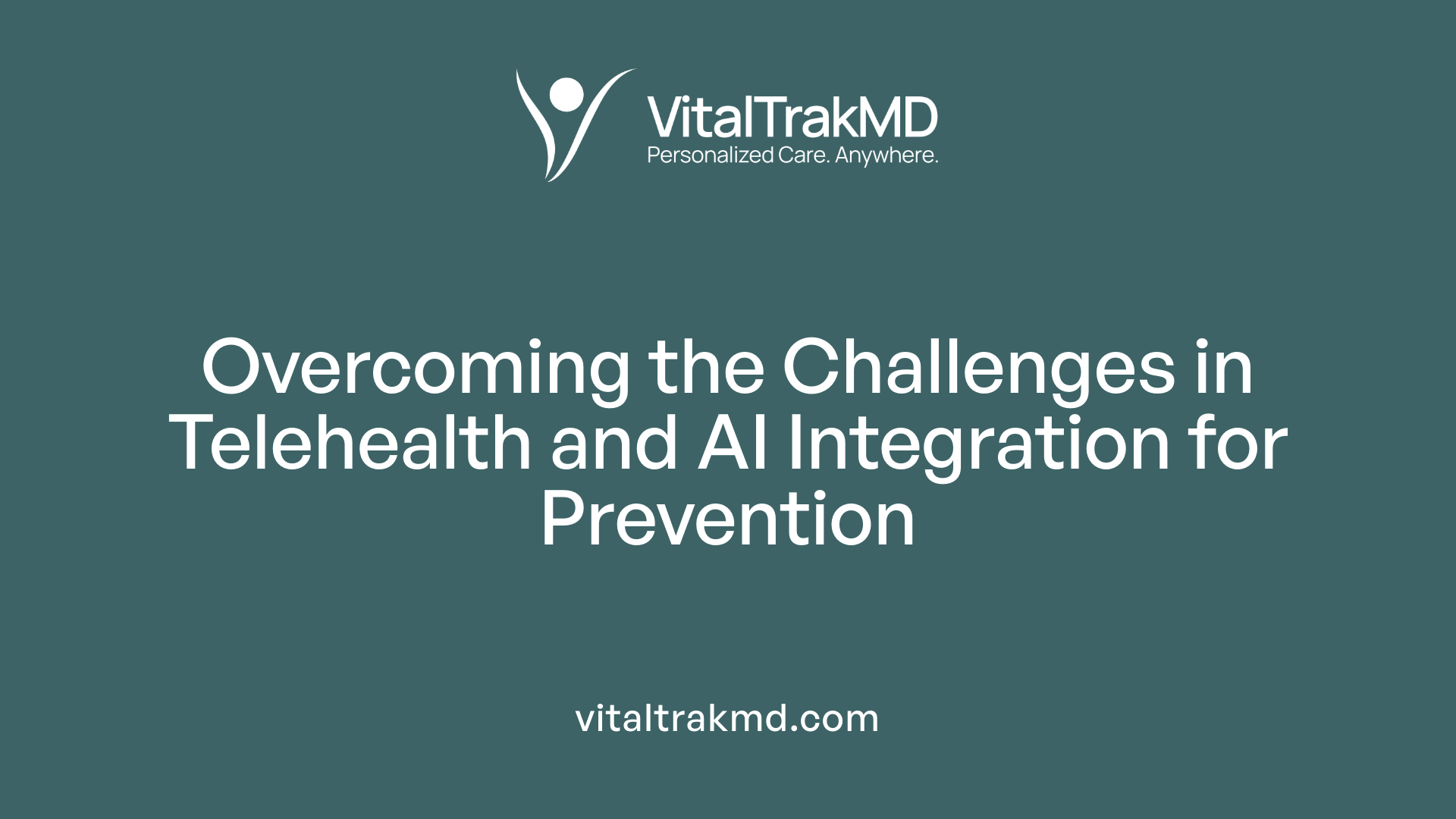
What challenges exist in integrating telehealth and AI into preventive medicine?
The integration of telehealth and artificial intelligence (AI) into preventive healthcare offers numerous benefits, such as early disease detection, personalized interventions, and improved health monitoring. However, several obstacles must be addressed to fully realize these advantages.
One of the primary issues involves data privacy and security. AI systems rely on vast amounts of sensitive patient information, which, if not properly protected, is vulnerable to breaches and misuse. Ensuring robust cybersecurity measures and complying with privacy laws are critical to maintaining patient trust and safeguarding health data.
Technological disparities also present significant barriers. Many remote or underserved communities lack reliable internet access, modern devices, or adequate infrastructure necessary for effective telehealth and AI deployment. These disparities deepen the digital divide, restricting equitable access to advanced healthcare services.
Regulatory and ethical concerns further complicate AI integration. Regulatory frameworks are often lagging behind technological developments, making it challenging to standardize AI tool validation, certification, and quality assurance. Ethical issues such as algorithmic bias, transparency, and accountability require ongoing oversight to prevent discrimination and ensure fair treatment of all patient populations.
Additionally, questions around the validation and reliability of AI tools remain prominent. Many AI algorithms are developed using limited or biased datasets, which can compromise their accuracy and generalizability. Rigorous clinical validation, continuous monitoring, and oversight by healthcare professionals are essential to prevent errors and ensure safe application.
Overcoming these challenges necessitates a collaborative approach involving policymakers, technologists, healthcare providers, and patients. Investments in infrastructure, development of clear regulations, and efforts to improve digital literacy are vital. Addressing socio-cultural and economic barriers will help ensure that AI-powered telehealth services are accessible, trustworthy, and effective for all communities, paving the way for more inclusive and resilient healthcare systems.
Future Trends and the Horizon of Preventive Telehealth-AI
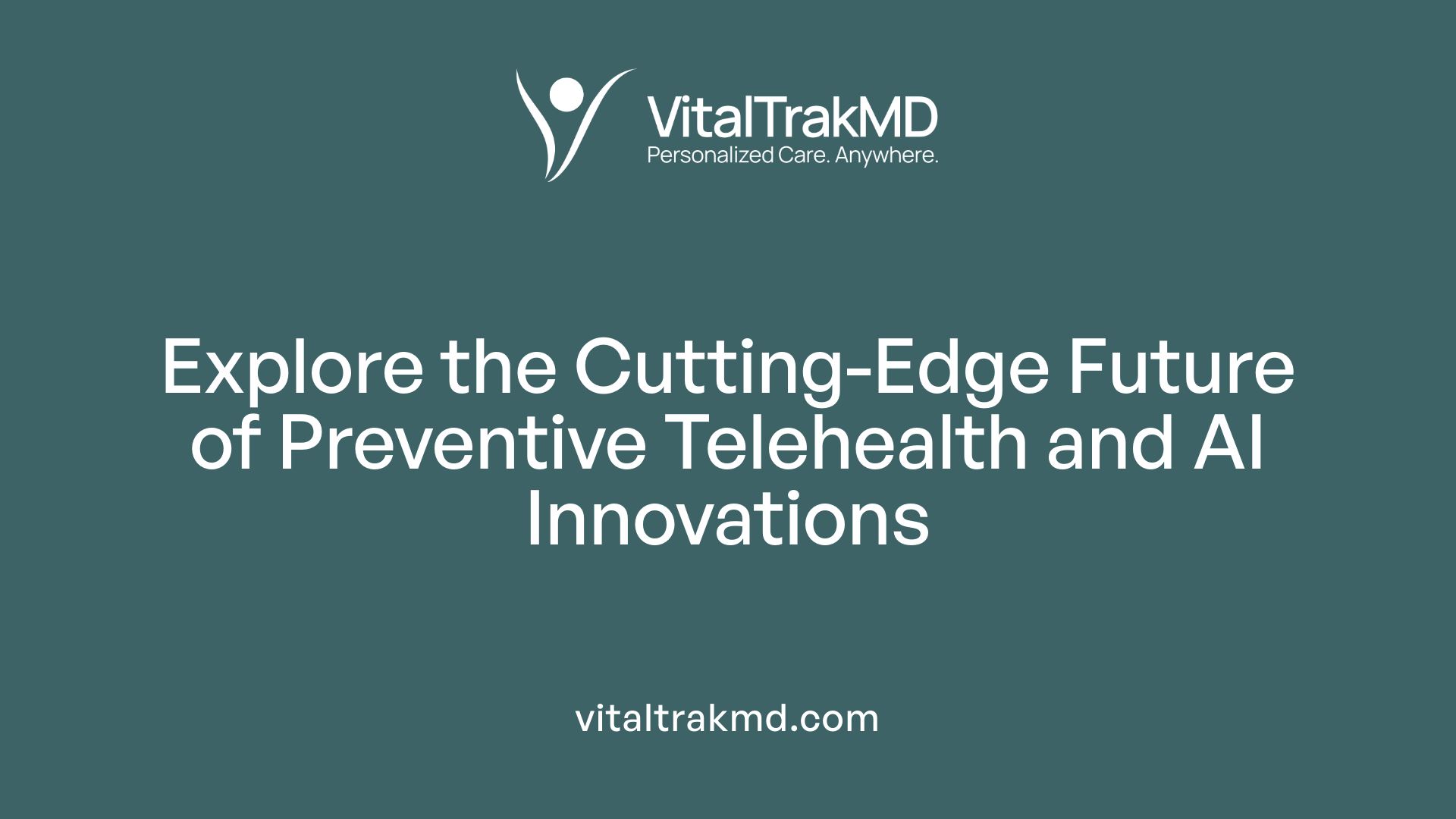
What are the latest trends and future prospects of AI and telehealth in prevention strategies?
Recent advancements in AI and telehealth are creating new opportunities for proactive healthcare. Technologies such as predictive analytics, wearable sensors, and advanced digital health platforms are at the forefront of this revolution. These tools allow for early disease detection by analyzing complex data, including medical images, genetic markers, and real-time health monitoring data.
AI-powered virtual assistants and chatbots are expanding access to mental health services and chronic disease management, engaging patients actively in their health journey. This shift from reactive treatment to prevention aims to identify risks before symptoms develop, enabling timely interventions.
Looking ahead, personalized medicine is expected to become more refined. AI can tailor interventions based on an individual’s genetic information, lifestyle, and environmental factors. Automation of administrative tasks, such as scheduling and billing, will streamline healthcare delivery further, freeing up providers to focus on patient care.
However, as these technologies evolve, ethical and responsible deployment remains a priority. Ensuring data privacy, mitigating bias, and establishing clear regulatory frameworks are essential for building trust and safeguarding patient rights.
Overall, the integration of AI with telehealth is set to make preventive healthcare more accessible, efficient, and personalized. By promoting early diagnosis and targeted interventions, these innovations promise to reduce healthcare costs while improving long-term health outcomes.
Real-World Applications — Case Studies and Examples
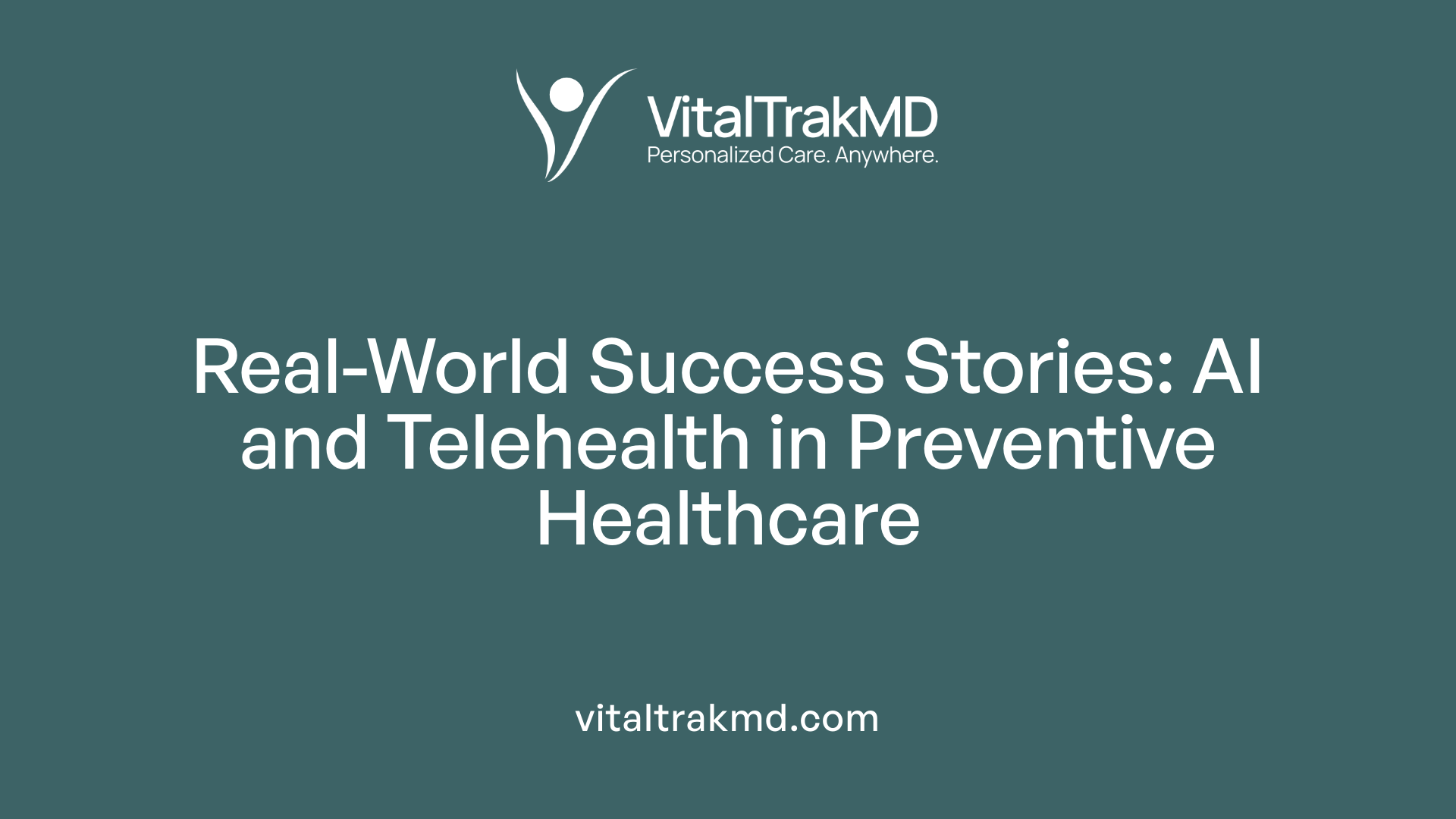
Can you provide case studies or real-world examples of telehealth and AI applications in preventive healthcare?
Several notable examples demonstrate how telehealth combined with AI is revolutionizing preventive healthcare.
One prominent case is Atrium Health’s Hospital at Home program, which utilizes remote monitoring and virtual consultations to care for patients outside traditional hospital settings. This approach not only improves patient comfort but also reduces hospital readmissions and healthcare costs.
Platforms such as Omada Health and Oshi Health employ digital health tools, wearable sensors, and mobile apps to monitor chronic conditions like diabetes and gastrointestinal diseases. These tools enable continuous symptom tracking and early intervention, helping prevent disease escalation.
In public health surveillance, AI-driven systems like BlueDot and HealthMap have become instrumental in detecting disease outbreaks early. During the COVID-19 pandemic and Ebola crises, these platforms analyzed vast amounts of data from various sources to predict disease spread and support timely responses.
On the diagnostic front, AI technologies such as IBM Watson and PathAI assist clinicians in identifying cancers early through image analysis and data integration. These tools facilitate personalized treatment planning and improve patient outcomes.
Collectively, these real-world applications showcase how the synergy between telehealth and AI enhances preventive care. They enable earlier detection of health issues, promote proactive management, and support effective public health initiatives, ultimately transforming healthcare delivery in diverse settings.
Remote Monitoring and Diagnostics — The New Frontier

How does telehealth and AI transform remote monitoring and diagnostics for preventive healthcare?
Telehealth combined with artificial intelligence (AI) fundamentally changes how we approach preventive healthcare. By enabling continuous, real-time monitoring through wearable sensors, contactless devices, and home-based tools, these technologies allow for early detection of health issues before symptoms become severe.
Wearable devices such as smartwatches, biosensors, ECG monitors, and blood pressure cuffs collect vital signs and health data around the clock. AI algorithms analyze this data to identify patterns indicative of potential health problems, such as irregular heart rhythms or blood glucose fluctuations. For example, deep learning models can spot early signs of skin cancer from image data or predict stroke risks based on monitoring data, often outperforming traditional diagnostic methods.
This integration supports proactive intervention strategies. When abnormalities are detected, AI-powered systems can alert healthcare providers and patients, prompting timely medical responses. These tools help reduce hospital admissions, improve management of chronic diseases, and enhance overall health outcomes.
AI also boosts diagnostic efficiency with advanced algorithms like convolutional neural networks (CNNs) for radiological images and Classification and Regression Trees (CART) for risk prediction. Virtual health assistants and NLP-driven chatbots increase patient engagement by providing health advice, reminders, and support that are accessible 24/7.
Further, the synergy of AI with emerging technologies such as 5G, the Internet of Medical Things (IoMT), and blockchain enhances remote healthcare's security, speed, and reliability. The result is a shift towards a more personalized, data-driven approach to preventive care, emphasizing early detection, continuous monitoring, and tailored interventions that can significantly improve health outcomes and reduce healthcare costs.
The Impact on Population Health Management
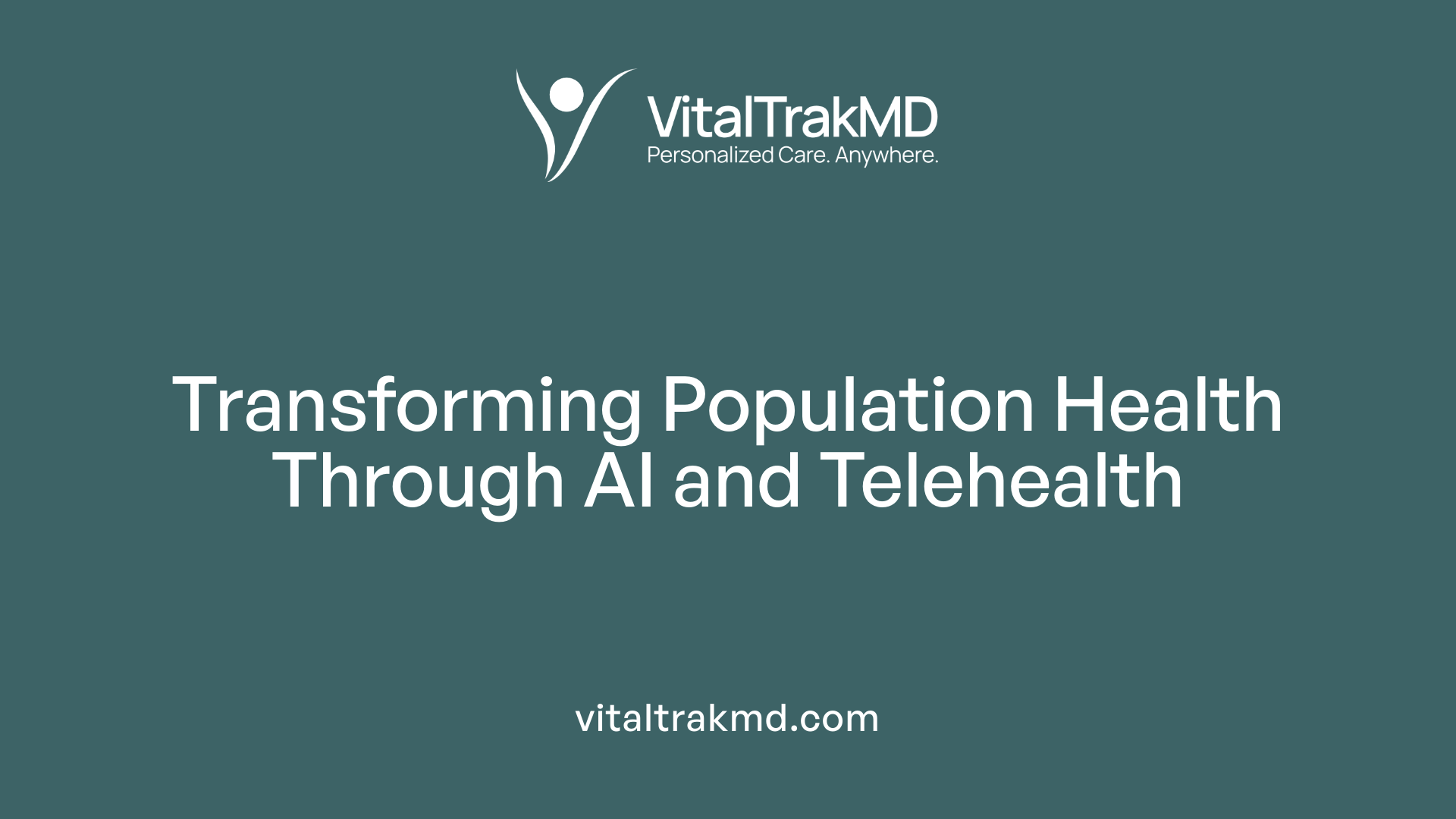 AI-powered telehealth solutions are revolutionizing how healthcare systems manage the health of entire populations. They enable proactive, personalized care by harnessing predictive analytics and sophisticated risk stratification models. These tools allow healthcare providers to identify high-risk individuals early, facilitating timely interventions that can prevent disease progression.
AI-powered telehealth solutions are revolutionizing how healthcare systems manage the health of entire populations. They enable proactive, personalized care by harnessing predictive analytics and sophisticated risk stratification models. These tools allow healthcare providers to identify high-risk individuals early, facilitating timely interventions that can prevent disease progression.
One major benefit is their role in large-scale screening and remote monitoring, especially for chronic diseases such as diabetes, hypertension, and heart conditions. Wearable devices and remote sensors continuously gather health data, which AI algorithms analyze to detect early signs of deterioration or complications. This early detection leads to reduced hospital admissions and better health outcomes.
AI technologies also improve the accuracy and speed of diagnostics through image analysis, automated documentation, and data integration. For example, AI in telehealth can flag suspicious skin lesions for further examination or automatically interpret imaging scans, streamlining diagnosis without requiring extensive human oversight.
Another vital aspect is the integration of diverse data sources—including electronic health records, social determinants, and patient-generated health data—creating comprehensive profiles for each individual. This enables tailored prevention strategies, targeted interventions, and personalized treatment plans, increasing their effectiveness.
Overall, AI-enhanced telehealth makes population health management more efficient by reducing unnecessary healthcare utilization, supporting early detection, and promoting equitable access to services across different communities. As a result, health systems can better allocate resources, improve patient outcomes, and contain costs.
Addressing Ethical, Regulatory, and Equity Concerns
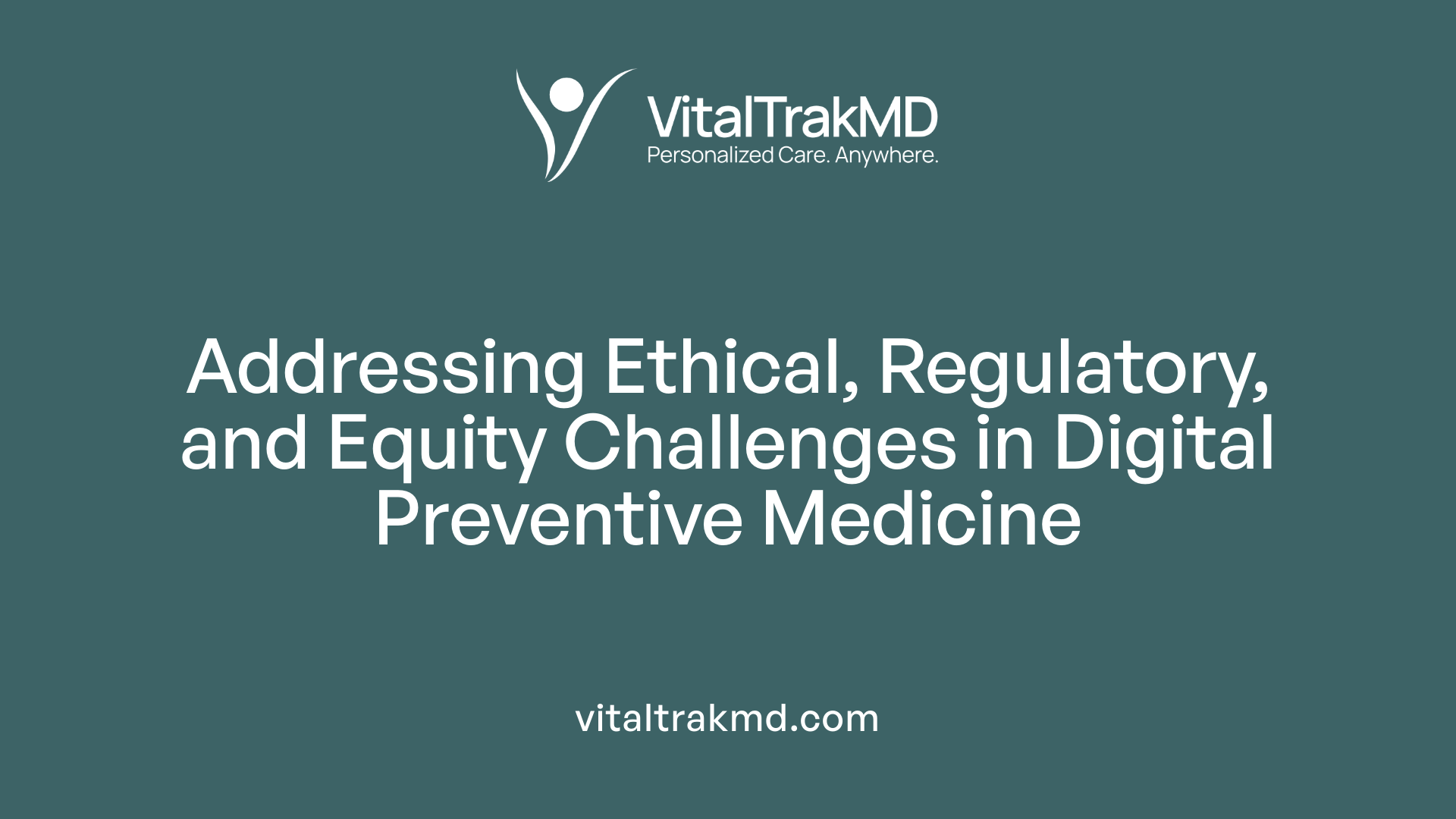
What ethical and regulatory challenges are associated with integrating AI and telehealth?
The integration of artificial intelligence (AI) and telehealth into preventive medicine offers promising advances, yet it also raises several important ethical and regulatory issues. One major concern is data privacy; health data used by AI systems are highly sensitive, and safeguarding this information against breaches is paramount. Regulations like GDPR in Europe and HIPAA in the United States aim to protect patient data but establishing compliance across diverse online platforms remains complex.
Another challenge involves algorithmic transparency and fairness. AI models can unintentionally incorporate biases present in training data, leading to disparities in healthcare outcomes among different demographic groups. This risk of discrimination underscores the necessity for robust validation and ongoing oversight.
The reliability and accuracy of AI tools are also under scrutiny. Ensuring that AI-driven diagnostics and decision-support systems meet rigorous standards involves extensive validation, clinical testing, and regulation. Without clear protocols, there is a danger of overreliance on unproven algorithms, potentially harming patients.
Additionally, infrastructural disparities—such as limited internet access or digital literacy—exacerbate the digital divide, hindering equitable access especially in underserved communities. This inequality can deepen existing health disparities if not addressed.
Addressing these challenges requires concerted stakeholder engagement, including policymakers, healthcare providers, technologists, and community representatives. Developing standardized guidelines, investing in digital infrastructure, and incorporating socio-cultural considerations will be essential to realize the full benefits of AI and telehealth while minimizing risks. Ultimately, responsible integration depends on navigating the ethical landscape carefully to foster trust and safety in digital health innovations.
Vision for the Future — Innovation, Integration, and Impact
 Emerging technologies, particularly in artificial intelligence (AI) and telemedicine, are poised to revolutionize preventive healthcare on a global scale. AI-driven predictive analytics, combined with telehealth platforms, enable early detection of diseases through continuous monitoring using wearables and IoMT (Internet of Medical Things) devices. These tools analyze large datasets such as medical images, genetic information, and health records to identify individual risks and recommend personalized interventions.
Emerging technologies, particularly in artificial intelligence (AI) and telemedicine, are poised to revolutionize preventive healthcare on a global scale. AI-driven predictive analytics, combined with telehealth platforms, enable early detection of diseases through continuous monitoring using wearables and IoMT (Internet of Medical Things) devices. These tools analyze large datasets such as medical images, genetic information, and health records to identify individual risks and recommend personalized interventions.
The potential impact of these innovations extends beyond individual patient care. Globally, they can improve health equity by expanding access to timely diagnostics and management for underserved populations, especially in rural or resource-limited settings. The integration of AI with telemedicine fosters real-time decision support, reduces healthcare costs, and enhances long-term health outcomes.
Multidisciplinary collaboration is essential for realizing this future. Healthcare providers, data scientists, bioengineers, policymakers, and patient advocates must work together to develop ethical, secure, and effective AI applications. This collaboration ensures that advances in technology are aligned with societal needs, regulatory standards, and cultural considerations.
Future prospects for AI and telehealth in prevention include these main facets:
| Technology/Strategy | Potential Impact | Supporting Innovation |
|---|---|---|
| Predictive Analytics | Early detection of chronic diseases, cancer, and cardiac risks | Machine learning models analyzing health data |
| Remote Monitoring | Continuous assessment of patient health to preempt crises | Wearables, IoMT devices, AI interpretation |
| Digital Health Platforms | Accessible, personalized health advice and screening | Teleconsultations, AI virtual assistants, chatbots |
| Automation in Healthcare | Streamlined administrative tasks, improved patient flow | AI-driven scheduling, billing, decision support systems |
| Advanced Diagnostic Tools | Faster and more accurate diagnoses, including image analysis | AI in radiology, pathology, genomics |
This synergy between AI and telehealth is set to facilitate a proactive approach to healthcare, emphasizing prevention over treatment. It supports early interventions, reduces disease burden, and promotes healthy aging.
Overall, these technological advancements are driving a healthcare future where prevention strategies are more precise, accessible, and effective—ultimately transforming global health landscapes.
Paving the Way for a Preventive Future
As technological innovations continue to evolve, the integration of telehealth and AI holds immense promise for transforming preventive medicine. By facilitating early detection, personalized interventions, and remote care, these technologies are enabling healthcare systems worldwide to be more proactive, efficient, and equitable. Overcoming current challenges through robust policies, technological advancements, and multidisciplinary collaboration will be vital. Harnessing the full potential of digital health can reduce disease burden, improve population health outcomes, and ultimately establish a sustainable, patient-centered approach to health that emphasizes prevention over treatment. The future of preventive healthcare is digital, data-driven, and increasingly accessible—shaping a healthier world for generations to come.
References
- Investigation into Application of AI and Telemedicine in Rural ...
- AI and Preventive Care: What you need to know - Caregility
- Review article The impact of artificial intelligence on remote healthcare
- The Application of Preventive Medicine in the Future Digital Health Era
- [PDF] Integrating Telemedicine and AI to Improve Healthcare Access in ...
- The Potential of AI in Telehealth in 2025 and Beyond - 3DLOOK
- Revolutionizing healthcare: the role of artificial intelligence in clinical ...
Recent articles
Want to Feel Better and Live Healthier?
Join hundreds of patients taking control of their health with personalized care that fits their life – not the other way around.
Rated 4.8/5 by 32+ customers



